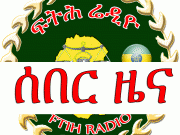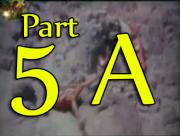Here are 10 of the greatest Muslim inventions. Muslim history is overflowing with awe-inspiring creations in the realms of art, architecture, and literature, but it's also filled with many significant and world changing inventions. Here are 10 of them, as reported by CNN. Number 10. Surgery. Doctor Al Zahrawi literally wrote the book on surgery about a thousand years ago. It was used throughout Europe for the next 500. He's also credited with inventing forceps and figuring out that cat guts made great dissolvable stitches. Number 9. Coffee. The first pot was brewed in Yemen in the 9th century. In its early days it helped Sufis stay awake for their late night devotions. The beverage soon began to make the rounds in the area and finally ended up in Europe in the 16th century. Number 8. Flying Machine. Long before Leonardo da Vinci started dreaming of flight, Abbas ibn Firnas was actually trying it. He built his first flying machine in the 9th century, and for a little while it worked. A very little while. Number 7. University. The world's very first degree-granting university was founded in Fez, Morocco in 859. It was established by Fatima al-Fihri, a young princess. Nearly 12 hundred years later, and it's still going strong. Number 6. Algebra. Whether you want to thank him or blame him, all the credit goes to Persian mathematician Al-Khwarizmi. He penned the treatise that defined a new algebraic order in the 800s. Number 5. Optics. Prior to the discoveries of Ibn al-Haytham in the year 1000, it was widely believed that the eye itself emitted the light that makes sight possible. He set the record straight, proving that it takes in light that has bounced off of other surfaces. Number 4. Music. OK, not all music, but many from the Middle East contributed greatly to its development. The lute and the rahab, which influenced the creation of the violin, were both introduced to Europe by Muslim musicians. Also, the scale we use today is said to come from the Arabic alphabet. Number 3. Toothbrush. Thankfully, around the year 600, the Prophet Mohammed reportedly had the good sense to fashion one out of a twig. The tree it came from also had breath-freshening qualities. Number 2. The crank. The first known instance of converting rotary movement to a linear one occurred in the Middle East in the 12th century. Since then, the method has been used worldwide for lifting heavy objects, driving internal combustion engines and creating bicycles. Number 1. Hospitals. The earliest known versions of them began to pop up in Muslim world late in the 9th century. They had centers for teaching as well as patient wards.
- Category
- English Da'awa







![FTIH RADIO 13th [ፍትህ ሬዲዮ] 13ኛ](http://www.bilaltube.com/uploads/thumbs/01cc30608-1.jpg)

![FTIH RADIO 15th [ፍትህ ሬዲዮ] 15ኛ](http://www.bilaltube.com/uploads/thumbs/171967b06-1.jpg)

![FTIH RADIO 25th [ፍትህ ሬዲዮ] 25ኛ](http://www.bilaltube.com/uploads/thumbs/e9985f3de-1.jpg)
